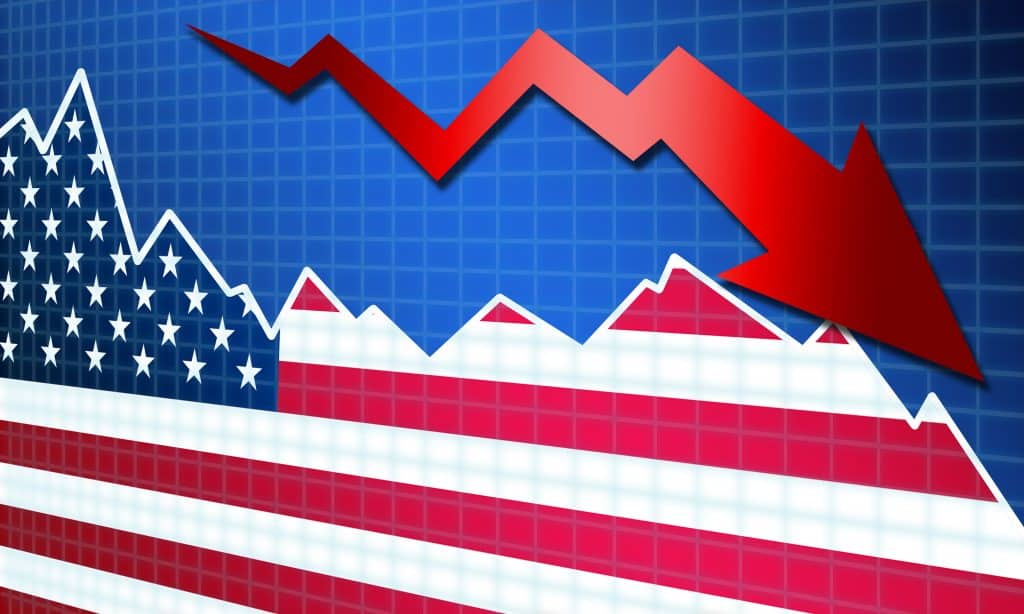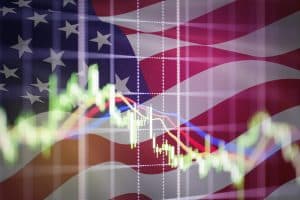Everything about U.S. recession indicators


In an unpredictable economy, U.S. recession indicators are essential tools that help us understand where the economy is headed.
By monitoring key economic signals such as GDP, unemployment rates, and consumer confidence, we can anticipate potential downturns and adjust our financial strategies accordingly.
Are you ready to explore the crucial signs of a recession and how they impact your daily life?
Let’s dive into the details!
Understanding recession indicators
Understanding U.S. recession indicators is crucial for anyone looking to effectively navigate the complex and often unpredictable economic landscape.
These indicators provide insights into the health of the economy and help individuals and businesses make informed financial decisions.
By recognizing these signs early, you can better prepare for a potential economic downturn and adjust your financial strategies accordingly. In this section, we will dive into some of the key U.S. recession indicators that signal the onset of a recession.
Key recession indicators
When assessing the potential onset of a recession, there are several metrics that serve as critical U.S. recession indicators.
These indicators offer a clear view of how the economy is performing and whether it is on the verge of a slowdown. Understanding these metrics can help you make smarter financial decisions.
The most common and essential U.S. recession indicators include:
Gross Domestic Product (GDP)
One of the most widely recognized U.S. recession indicators is GDP. Gross Domestic Product measures the total value of all goods and services produced within a country.
When GDP contracts for two consecutive quarters, it is often considered a reliable signal of a recession. A shrinking economy means businesses are producing less, and fewer jobs are available, which can lead to higher unemployment rates.
Unemployment Rate
Another crucial U.S. recession indicator is the unemployment rate. Rising unemployment can be a strong signal of economic distress. As businesses face lower demand for products and services, they may cut costs by laying off workers.
This reduction in the workforce can lead to a domino effect: fewer people working means less consumer spending, which then exacerbates economic struggles.
High unemployment rates often signal deeper economic problems, making it essential to monitor this indicator closely.
Consumer Confidence Index
The Consumer Confidence Index is another important U.S. recession indicator. This index measures the optimism or pessimism consumers feel about the economy’s future.
A significant drop in consumer confidence can signal that people are worried about their financial situation. When consumers feel uncertain, they are less likely to spend money, which slows down economic activity and can contribute to a recession.
Stock Market Trends
The stock market is often viewed as a leading indicator of economic performance. A significant and sustained downturn in stock prices can signal that investors are losing confidence in the economy.
A declining stock market often precedes a recession, as it reflects concerns about future economic growth. Watching stock market trends closely can provide early warnings of economic struggles.
The Interconnection of U.S. Recession Indicators
One of the most important aspects of understanding U.S. recession indicators is how they relate to one another.
These indicators do not function in isolation, they are deeply interconnected, and changes in one can trigger a cascade of effects on others.
For example, when GDP declines, it typically leads to rising unemployment rates, as companies reduce their output and need fewer workers.
This, in turn, negatively affects consumer confidence, as more people lose their jobs or fear job loss. As a result, people tend to cut back on spending, further reducing economic growth.
This cycle can deepen the recession if not addressed in time.
The role of businesses
Businesses play a pivotal role in responding to U.S. recession indicators. When companies recognize signs of an economic downturn, such as rising unemployment or declining GDP, they often take action to protect their bottom lines.
Common responses from businesses include:
- Cutting costs by reducing operations or increasing efficiency.
- Freezing hiring to avoid adding new employees when demand is uncertain.
- Delaying investments in new projects or expansions.
These actions, while necessary for the business’s survival, can contribute to an economic slowdown. Fewer jobs and reduced spending power can make the recession worse.
Therefore, businesses must carefully monitor U.S. recession indicators to adjust their strategies in a way that minimizes negative economic impacts.
Key economic metrics to watch
Monitoring key U.S. recession indicators is vital for understanding the health of the economy and predicting its future trajectory.
These economic metrics provide valuable insights into how well the economy is performing, how businesses are reacting, and how individuals can adjust their financial strategies.
By regularly tracking these recession indicators, you can make informed decisions about your personal finances, investments, and business operations.
In this section, we break down the most important U.S. recession indicators you should keep an eye on to help you understand the broader economic landscape.
Essential economic metrics
- Gross Domestic Product (GDP): GDP measures the total value of goods and services produced in a country. A rising GDP indicates economic growth, while a declining GDP can signal a recession.
- Unemployment Rate: This percentage indicates how many people in the labor force are unemployed but actively seeking jobs. A high unemployment rate can suggest economic trouble, as it shows that fewer people have jobs.
- Consumer Price Index (CPI): The CPI tracks the average price change over time of a basket of consumer goods and services. This metric is essential for understanding inflation rates.
- Interest Rates: Changes in interest rates significantly impact consumer borrowing and spending. Lower interest rates often stimulate economic growth, while higher rates may restrict it.
As you keep an eye on these metrics, remember that they are interconnected.
For instance, an increase in the unemployment rate can lead to decreased spending by consumers, which may ultimately affect GDP.
Similarly, high inflation rates reflected in the CPI can prompt central banks to raise interest rates, influencing economic activity further.
Understanding these metrics helps you gauge not just the current state of the economy but also its potential trajectory.
By analyzing interest rates alongside the GDP and unemployment rate, you can develop a clearer picture of economic health.
Observing these indicators makes it easier to prepare for shifts in economic conditions that could affect personal and business finances alike.
Keeping track of these metrics can provide significant advantages. For instance, a rise in GDP often leads to greater job opportunities.
Conversely, if unemployment rises, it may be time to reconsider financial strategies and spending habits. In today’s ever-changing economy, staying informed about these key metrics is crucial for navigating potential challenges and opportunities.
How consumer confidence affects the economy

Consumer confidence plays a significant role in the health of the economy. When people feel positive about their financial situation, they are more likely to spend money.
This spending drives economic growth and stimulates businesses. Understanding how this confidence works is key to seeing its impact on various economic factors.
Impact of consumer confidence
- Spending Behavior: High consumer confidence usually leads to increased spending on goods and services. This can boost company sales, leading to higher profits.
- Investment Decisions: When people are confident, they are more likely to make significant purchases, like homes and cars, which can positively influence the housing market and related industries.
- Employment Rates: Higher consumer spending encourages companies to hire more workers. This can decrease the unemployment rate and overall improve economic conditions.
- Stock Market Performance: Investor sentiment often aligns with consumer confidence. High confidence can lead to rising stock prices as companies are expected to perform well.
As consumer confidence rises, the overall economic climate becomes healthier. When individuals believe that job security and income stability will continue, they tend to spend more.
This creates a positive cycle, where increased spending leads to higher demand, and businesses respond accordingly by hiring staff and increasing production.
Conversely, if consumer confidence drops, spending may decline, and businesses can begin to struggle.
When consumers worry about the economy, they tend to save more and spend less, leading to stagnant or declining economic growth. This dynamic shows how vital consumer sentiment is to the economy’s health.
Understanding the relationship between consumer confidence and the economy can help individuals and businesses prepare for changes.
By paying attention to factors like job reports and economic forecasts, you can better gauge potential shifts in this essential indicator of economic health.
In times of uncertainty, staying aware of consumer sentiment can provide critical insights into future economic conditions.
Impact of unemployment rates on recession
The Impact of Unemployment Rates on U.S. Recession Indicators and Economic Health
The impact of unemployment rates on U.S. recession indicators cannot be overstated. A rising unemployment rate is often one of the clearest signals that an economy is heading toward a recession.
When unemployment rates increase, it typically means that the economy is in trouble, and these U.S. recession indicators can have cascading effects throughout the economy, further deepening the downturn.
Understanding how unemployment rates impact economic performance is essential for grasping the broader picture of how economic health and job markets are interconnected, especially during a recession.
How Unemployment Rates Impact a U.S. Recession
The unemployment rate is one of the most important U.S. recession indicators because it reflects the overall state of the job market.
Rising unemployment rates are often directly tied to a recession, as they signal that businesses are cutting back and jobs are being lost.
Here’s a deeper look into how rising unemployment rates influence the economy and contribute to the broader economic downturn:
Consumer Spending and Economic Slowdown
When unemployment rates rise, there is less money in circulation because people without jobs have less income to spend.
This decrease in income leads to decreased consumer spending, which is one of the most powerful U.S. recession indicators. Reduced consumer spending slows down economic growth because businesses see less demand for their products and services.
The economic decline caused by increased unemployment rates creates a vicious cycle, where lower demand leads to further layoffs and job losses, which can worsen the recession.
Business Revenue and Cost-Cutting Measures
The decline in consumer spending due to rising unemployment rates directly impacts business revenue.
As fewer consumers make purchases, businesses are forced to reduce their production and adjust their staffing levels. This often leads to further job cuts, making unemployment rates even higher.
The cycle of decreasing consumer demand and business revenue continues to accelerate the economic decline, making the recession even more severe. The unemployment rate becomes a critical signal of the economic contraction.
Government Spending and Social Services
As unemployment rates rise, governments typically increase spending on social services like unemployment benefits, which can lead to higher public expenditures.
This can strain public resources and lead to additional financial instability.
As unemployment rates climb, governments may be forced to respond with stimulus packages or fiscal support to help stimulate job creation and stabilize the economy.
However, the increased expenditure can also lead to rising national debt and affect long-term fiscal policies, especially during a recession.
Job Market Recovery and Prolonged Economic Struggles
A rising unemployment rate usually signals a slow recovery in the job market. When many people are out of work, it can take much longer for the economy to return to full employment, even when the recession technically ends.
High unemployment rates can prolong the economic recovery, as businesses remain cautious about hiring and expanding until they feel confident that the economy has fully stabilized.
The unemployment rate serves as a key indicator in gauging how long it will take for the job market to recover and how quickly economic conditions can improve.
The Psychological Impact of Rising Unemployment Rates
The psychological impact of rising unemployment rates is significant. When people see that unemployment rates are rising, they become more uncertain about their financial future.
This uncertainty leads to a reluctance to spend, even among those who are still employed.
People are more likely to save their money, reduce discretionary spending, and delay large purchases, such as homes or cars, further reducing demand in the economy.
This behavior deepens the recession as businesses face lower sales and are forced to lower prices or offer discounts to attract customers.
This can reduce their profit margins and create even more layoffs, which feeds back into the rising unemployment rates and economic downturn.
The rising unemployment rate directly affects both consumer and business behavior, and its psychological impact can cause prolonged economic struggles.
The cycle of increased unemployment and reduced spending can make a recession harder to overcome and can slow down recovery even after the official end of a recession.
Monitoring Unemployment Rates as a Key U.S. Recession Indicator
Monitoring unemployment rates is essential for identifying early warning signs of a U.S. recession. A sudden spike in unemployment rates is often a clear indicator that a recession may be imminent or already in progress.
By tracking unemployment rates closely, individuals, businesses, and policymakers can take proactive steps to prepare for potential economic challenges.
When unemployment rates rise significantly, policymakers often introduce stimulus measures designed to stimulate job creation and encourage consumer spending.
These measures can include tax cuts, government spending on infrastructure projects, or enhanced unemployment benefits.
The goal is to reduce the negative impact of high unemployment rates and help the economy stabilize during periods of economic contraction.
Understanding the relationship between unemployment rates and recession indicators helps guide decision-making during times of economic uncertainty. By keeping track of unemployment rates, you can gain valuable insights into how the economy is performing and how close we might be to entering a recession.
Historical context of U.S. recessions
Understanding the historical context of U.S. recessions helps us recognize patterns and causes behind economic downturns.
Throughout history, the United States has experienced several significant recessions, each shaped by unique factors that influenced the economy.
Major historical recessions
- The Great Depression (1929-1939): This was the most severe economic downturn in U.S. history, triggered by the stock market crash of 1929. Unemployment soared, and many businesses failed.
- The stagflation of the 1970s: Characterized by high inflation and stagnant economic growth, this period saw rising oil prices and unemployment, leading to prolonged economic hardship.
- The Great Recession (2007-2009): Caused by the housing market collapse and risky financial practices, this recession led to massive job losses and a significant decline in consumer confidence.
- The COVID-19 recession (2020): Triggered by a global pandemic, this recession resulted in unprecedented job losses and economic shutdowns, showcasing how external factors can lead to quick downturns.
The roots of these recessions often lie in a combination of factors, including poor financial practices, sudden economic shocks, and shifts in consumer behavior.
For example, during the Great Depression, a significant drop in consumer spending led to widespread business failures and job losses.
Similarly, the Great Recession was marked by high-risk lending practices that inflated the housing bubble, which ultimately burst.
Additionally, government and Federal Reserve responses play a crucial role in shaping the economic landscape during recessions.
In the wake of historically high unemployment rates, policymakers have often implemented stimulus measures to bolster the economy.
These can include lowering interest rates, increasing government spending, and providing financial support to struggling industries.
Analyzing historical recessions can also help prepare for future economic challenges.
By understanding past mistakes and successes, both policymakers and businesses can implement more effective strategies to mitigate the impact of economic downturns.
Recognizing trends in consumer confidence, unemployment, and inflation can offer valuable insights for navigating future uncertainties.
Preparing your finances for a potential recession

Monitoring key U.S. recession indicators is crucial for understanding the current state and future trajectory of the economy.
These indicators provide insights into economic performance, helping individuals and businesses make informed decisions to protect and grow their financial assets.
By paying attention to these key metrics, you can better anticipate economic downturns and adjust your strategies accordingly.
In this section, we will break down the most important U.S. recession indicators you should keep an eye on to understand the health of the economy and its potential direction.
Essential U.S. Recession Indicators to Watch Closely
The following U.S. recession indicators are crucial for assessing the economy’s health.
These metrics help reveal how well the economy is performing and whether it is heading toward a recession or economic expansion. Regularly monitoring these indicators can provide you with valuable insights into upcoming shifts in the economy, enabling you to make proactive financial decisions.
Gross Domestic Product (GDP)
Gross Domestic Product (GDP) is one of the most important U.S. recession indicators.
It measures the total value of all goods and services produced in the country over a specific period. A declining GDP for two consecutive quarters is widely considered one of the most reliable signs of a recession.
A shrinking economy signals that businesses are producing less, resulting in fewer job opportunities and lower consumer spending.
On the other hand, a growing GDP suggests economic expansion and increased prosperity. Keeping track of GDP changes is crucial to anticipate a recession and prepare for potential challenges.
Unemployment Rate
The unemployment rate is a key U.S. recession indicator that reflects the percentage of the labor force actively seeking work.
Rising unemployment rates are typically seen as a sign of economic trouble, as businesses may lay off workers due to reduced demand for goods and services.
A higher unemployment rate often results in decreased consumer spending, leading to a further slowdown in economic growth.
Monitoring unemployment trends helps you gauge the overall health of the job market and understand if a recession is likely to occur.
Consumer Price Index (CPI)
The Consumer Price Index (CPI) is a vital U.S. recession indicator that measures the average change in prices for a basket of consumer goods and services. The CPI is primarily used to assess inflation levels.
A high CPI indicates inflation, which can reduce purchasing power and cause financial strain on consumers.
If inflation rises too quickly, it may prompt central banks to increase interest rates, which could slow down economic growth.
Watching the CPI allows you to understand how inflation is impacting the economy and whether it’s an early sign of a recession.
Interest Rates
Interest rates play a significant role in the overall health of the economy, making them essential U.S. recession indicators. Central banks, such as the Federal Reserve, set interest rates to control inflation and stimulate economic activity.
Lower interest rates typically encourage borrowing and spending, which boosts economic growth.
However, higher interest rates can restrict borrowing and reduce spending, leading to a slowdown in economic activity.
When central banks adjust interest rates in response to economic conditions, it’s often a direct response to concerns about a potential recession. Keeping track of interest rate changes is vital to understand economic policy and its potential impact on the economy.
Interrelation of U.S. Recession Indicators and Economic Health
The U.S. recession indicators mentioned above are deeply interconnected. A change in one indicator often leads to shifts in others, providing a more comprehensive understanding of the economy’s state.
For example, when GDP declines, it often results in higher unemployment rates, as businesses cut back on production and jobs. This, in turn, can negatively affect consumer confidence, leading to reduced consumer spending.
As spending decreases, GDP continues to decline, potentially resulting in a full recession. Understanding how these U.S. recession indicators interrelate helps you predict economic changes and prepare for them.
Why It’s Essential to Track U.S. Recession Indicators Regularly
Tracking U.S. recession indicators is essential for staying ahead of economic trends. Regular monitoring provides you with early warnings about potential economic slowdowns, allowing you to make adjustments to your financial strategies before conditions worsen.
For instance, if unemployment rates begin to rise, it might signal a weakening job market, prompting you to review your spending and investment strategies.
Similarly, if GDP growth slows down, it could be time to reconsider your business plans or financial portfolio to prepare for the impact of a recession.
By staying informed about these U.S. recession indicators, you can better protect your assets and make more strategic decisions.
Whether you are managing personal finances or running a business, understanding how economic indicators work together can give you a significant advantage in navigating uncertain economic times.
Stay Informed and Be Prepared for Economic Shifts
Understanding the U.S. recession indicators is essential for navigating the complexities of economic downturns.
By closely monitoring key metrics such as GDP, unemployment rates, and consumer confidence, you can make proactive financial decisions and better prepare for potential challenges ahead.
The relationship between these indicators offers valuable insights into the overall health of the economy, giving you the tools to anticipate shifts and mitigate risks.
It’s crucial to recognize how these U.S. recession indicators are interconnected. For example, a decline in GDP often triggers higher unemployment rates, which subsequently lowers consumer confidence.
These cascading effects can deepen an economic downturn, so staying informed about these signals can help you take timely action.
Whether you’re a business owner adjusting strategies or an individual reevaluating your financial plans, understanding U.S. recession indicators can empower you to make smarter choices.
Moreover, by taking steps like building an emergency fund, reducing debt, and diversifying income sources, you can safeguard your financial well-being in times of economic uncertainty.
Preparing for a potential recession isn’t just about reacting to bad news—it’s about staying one step ahead by understanding how economic indicators can shape the future.
For more in-depth analysis of U.S. recession indicators, we recommend checking out the following resources:
Staying vigilant about U.S. recession indicators will give you a clearer view of where the economy is headed. By being prepared, you can weather the storm of any potential downturn and ensure that you’re in the best position for the future.
FAQ – Frequently Asked Questions about U.S. Recession Indicators
What are the main indicators of a potential recession?
The main indicators include GDP growth, unemployment rates, consumer confidence, and stock market performance.
How does unemployment affect the economy during a recession?
High unemployment reduces consumer spending, which can lead to decreased business revenue and further economic decline.
What steps can I take to prepare my finances for a recession?
Building an emergency fund, reducing debt, and diversifying income sources are essential steps to prepare.
How can historical recessions help us today?
Learning from historical recessions allows us to understand patterns and improve strategies for future economic challenges.
Liked the article?





